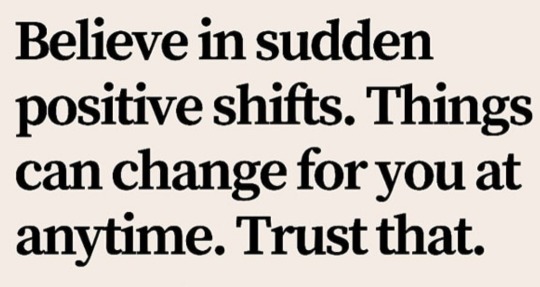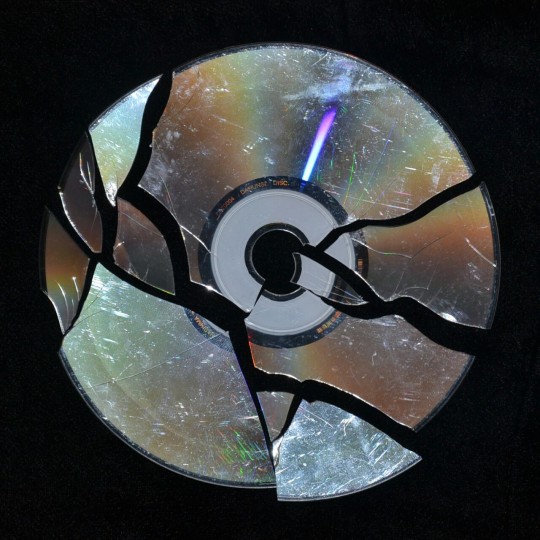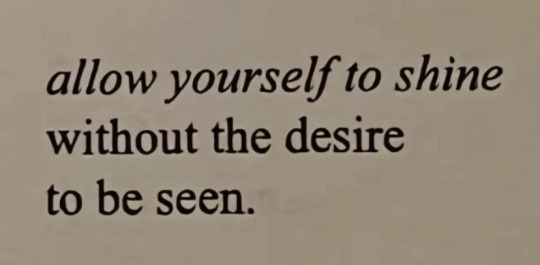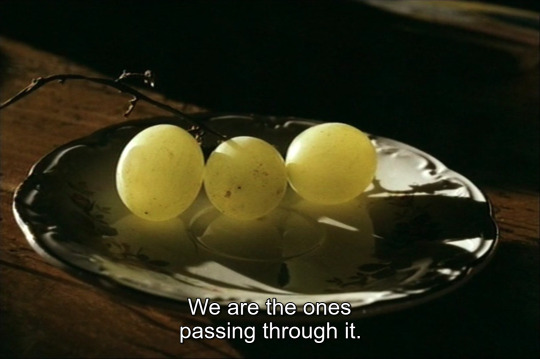Text
Today's Inspiration
Today’s Inspiration

View On WordPress
6 notes
·
View notes
Text





SGS 928 S4 Gullwing, 1987. More 1980s gullwing goodness, it seems there was only one of these. If you understand german you can read all about it here
462 notes
·
View notes
Text





Tuthill GT ONE, 2024. A modified 911 inspired by the GT1 Strassenversion has been revealed at Monterey Car Week. The carbon fibre bodywork has been designed by Florian Flatau. The mid-mounted 4.0 litre flat six is available in 500hp naturally-aspirated form or with turbochargers boosted to 600hp. Production will be limited to 22 units at an undisclosed price.
459 notes
·
View notes
Text
🗣️ This is for all new internet connected cars

A new study has found that your car likely knows more about you than your mom. That is disconcerting, but what’s even more so is what is being done with your information. It’s all about the Benjamins. Our private information is being collected and sold.
The Mozilla Foundation, a non-profit that studies internet and privacy issues, studied 25 car manufacturers. And it found every manufacturer sold in America poses a greater risk to your privacy than any device, app or social media platform.
Our cars are rolling computers, many of which are connected to the internet collecting information about how you drive and where. New cars also have microphones and sensors that give you safety features like automatic braking and drowsy driver detection. Those systems are also providing information. Got GPS or satellite radio? Then your car likely knows your habits, musical and political preferences.
Did you download your car’s app which gives you access to even more features? Well that also gives your car access to your phone and all the information on it.
The study found that of the 25 car brands, 84% say they sell your personal data.
And what they collect is astounding.
One example the study sites is KIA’s privacy policy. It indicates the company collects information about your sexual activity. I initially didn’t believe it until I pulled KIA’s privacy policy and read it. And it’s right there in black and white. It says it collects information about your “ethnicity, religious, philosophical beliefs, sexual orientation, sex life, or political opinions.

And it says it can keep your info for “as long as is necessary for the legitimate business purpose set out in this privacy notice.”
Translation: Nissan can keep your information as long as they want to. And more than half of the manufacturers (56%) say they will share your information with law enforcement if asked.
(continue reading) more ↵
9K notes
·
View notes
Text
People are powerless without your reaction, preserve your energy.
19K notes
·
View notes
Text
Devote yourself to loving others, devote yourself to your community around you, and devote yourself to creating something that gives you purpose and meaning.
Mitch Albom, Tuesdays with Morrie
9 notes
·
View notes
Text
"Is the glass half full or half empty?"
Comes across as such a silly question when you realize that to answer this
You need to ask if you're pouring into the cup or out of it ...
you need to pour into the cup for me to tell you that it's half full
You need to spill from it for me to tell you that it's half empty .
You're simultaneously the cup and the hand that is holding the cup & deciding what happens inside it
deciding to spill or to be filled to the brim
Is a series of small choices
0 notes
Text

How Jay-Z’s ‘Vol. 3’ Explained Rap Music in 1999—and Predicted Its Future
In the fall of 1999, Def Jam posted a billboard atop the intersection of Flatbush and DeKalb avenues in downtown Brooklyn to advertise Jay-Z’s new album. Fittingly, the blown-up cover image for Vol. 3 … Life and Times of S. Carter depicted the rapper flanked by skyscrapers, peering downward. (Hov always did love a good metaphor.) He was now above the competition—in his home borough, in New York City, and in hip-hop. By the time Vol. 3 dropped in late December, Jay-Z was rap’s undisputed ruler.
Uneasy lies the head that wears the crown. Two of the previous kings of hip-hop had been slain: 2Pac in Las Vegas in September 1996, and the Notorious B.I.G. six months later in March 1997. The following year, chart-topping debuts from DMX and Lauryn Hill were game-changers; X released a second album at the end of ’98 that also went no. 1. Either he or Hill could reasonably claim the throne that year, but their reigns weren’t built to last. For all his bark, X was a little too one-dimensional to keep in step with rap’s evolution. Meanwhile, Hill’s first solo album would also be her last.
Into this power vacuum stepped Jay-Z, who had already built momentum from his own no. 1 album in ’98, Vol. 2 … Hard Knock Life. As the pall cast by the deaths of Pac and Biggie cleared, Jay snatched the crown in 1999. Vol. 3 went no. 1, as did all nine of his subsequent solo releases. Beyond his transcendent skill, Jay’s nimbleness and ambition would become the hallmarks of a long-running monarchy. He hewed his sound to adapt to radio trends and collaborated with the right people at the right time. And he was ruthlessly competitive, on and off the mic, which only added to his longevity.
While Vol. 3 isn’t regarded as Jay’s best album—that accolade is reserved for his debut or 2001’s The Blueprint—it does have a wide-ranging aesthetic that reveals the expansive kingdom that Jay-Z oversaw when he first assumed power. The South was rising. Dr. Dre returned. New disrupters were en route. And hip-hop in general was on the verge of going fully mainstream. Jay observed the terrain and adapted accordingly. From his very first words on the album—Yeah, I know you just ripped the packaging off your CD—to the bootlegged songs that were left off the final cut, Vol. 3 provides a perfect time capsule of rap as it headed into the new millennium.
Here, then, is a selection of songs from Vol. 3 that highlight where rap was 20 years ago and also where it was going.
“Watch Me” (feat. Dr. Dre)
Any residue from the East Coast vs. West Coast conflict was mostly gone by 1999—truthfully, the coastal rancor of the mid-’90s was always more of a Bad Boy vs. Death Row dispute. As those record labels waned, so too did any lingering beef. The deaths of Pac and Big set off an exodus of artists. Dr. Dre left Death Row in 1996 to start his own Aftermath Entertainment; two years later, Snoop Dogg fled to No Limit Records. In April ’99, Mase quit Bad Boy to become a pastor, and Sean “Puffy” Combs’s grip on radio playlists was loosening.
When the smoke cleared, Dr. Dre and Jay-Z emerged as the new leaders of their respective coasts—and, unlike their predecessors, willing collaborative partners. 1999 would be a huge year for Dre. In February, he hitched his wagon to a young white disrupter from Detroit, setting the stage for his second career as a record mogul. But not before dropping another smash of his own in November: 2001, his first solo album in seven years. As Dre’s new secret weapon, Eminem reprised Snoop’s breakout role on The Chronic with his own song-stealing performances on 2001. Track for track (and with apologies to Mos Def), it’s probably rap’s only undeniable classic from 1999.
Jay-Z had a hand in its success. He famously wrote Dre’s defiant comeback verses for “Still D.R.E.,” 2001’s lead single. For Jay-Z’s Vol. 3, Dre rapped the hook on “Watch Me” over a pounding Irv Gotti and Lil Rob beat that sounded like one of Dre’s, reusing Jay’s lines from an old Biggie song. It wasn’t an official East-West truce, but it felt like one.
“It’s Hot (Some Like It Hot)”
Speaking of disrupters: Eminem wasn’t the only ’99 newcomer who would one day dominate the charts with the assistance of Dr. Dre. For the Queens rapper named 50 Cent, however, the Dre partnership came a few years later. First was “How to Rob,” an opening salvo that wasn’t a mainstream hit, but featured lyrics—about robbing every big-name rapper or R&B singer—that instantly made 50 an industry villain. Jay-Z, of course, was one of 50’s many targets: “What, Jigga just sold like four milli, got something to live for / Don’t want a n-gga putting four through that Bentley coupe door.”
“How to Rob” served its purpose, as it drew the attention of rap’s new king. On “Hova Song (Intro),” Vol. 3’s opening track, Jay responded: “Mike Jordan of rap, outside Jay working / Now watch how quickly I drop 50.” Then, on the Timbaland-produced “It’s Hot,” he dropped the memorable dagger (which he premiered months before at Hot 97’s Summer Jam): “Go against Jigga your ass is dense / I’m about a dollar, what the fuck is 50 cents?” Two punch lines don’t constitute a real feud: Jay-Z saved his real missiles for a 2001 battle with someone closer to his level in Nas, who dropped two high-selling but mid-quality albums in 1999 and always remained a throne contender. As for 50? In 2000, he was the one who got shot up in a car. Three years later, alongside Em and Dre, he would rule commercial rap.
“Snoopy Track” (feat. Juvenile)
If 2001 was the most memorable rap album from 1999, then “Back That Azz Up” was the year’s most enduring rap song. It dropped as a single in February, after first appearing on Juvenile’s 1998 release 400 Degreez, which remains Cash Money Records’ best-selling album to this day. Off the strength of Juve’s “Back That Azz Up” and a string of lesser 1999 hits—B.G.’s “Bling Bling,” Hot Boys’ “We on Fire,” and a teenage Lil Wayne’s “Tha Block Is Hot”—Cash Money became the dominant force in Southern rap. The South had made inroads earlier in the decade, powered by collectives like Atlanta’s Dungeon Family and Memphis’s Hypnotize Minds, but New Orleans was the region’s epicenter in ’99, thanks to Cash Money and No Limit Records. The latter, however, was lauded more for the business exploits of its CEO, Master P, than for its musical output.
Cash Money’s breakthrough came with Juvenile’s 1998 single “Ha.” As the song started traveling beyond the South, Jay recorded his own verse over Mannie Fresh’s instrumental and sent it to Cash Money through its parent label, Universal. That unsolicited Jay verse was added to the official remix, and suddenly Juvenile was a bigger presence nationwide. The South may have been buzzing, but NYC was still the ultimate arbiter of rap cool. “After that,” said Juve of the remix in 2012, “I didn’t have a problem doing nothing with anybody. I didn’t have problems with all those companies who didn’t know who I was.” The “Ha” remix set off a chain of NYC-South team-ups in ’99, including the Ruff Ryders’ Juve-featuring “Down Bottom” and Cash Money’s appearance on Noreaga’s second solo album. (Jay-Z also popped up on a No Limit record—Silkk the Shocker’s “You Know What We Bout”—that went nowhere.) On Vol. 3’s “Snoopy Track,” Juve and Jay-Z reunited on a loopy, flow-driven Timbaland rhythm that began with the Brooklyn rapper paying homage to the South: “This is for my n-ggas down in Houston on candy paint / All my n-ggas in the Dirty South, Miami mayne / All my n-ggas in the ATL throwin’ dem ’bows.”
To be clear, Jay-Z giving Juve the coveted NYC cosign on “Ha” was less an act of benevolence than it was opportunism. From touring down South, Hov would’ve been aware of what local artists were popping in the clubs. His two songs with Juvenile, as well as his Vol. 3 smash “Big Pimpin’” with Texas duo UGK, were mutually beneficial collaborations. As Juve later put it: “When he did [the “Ha” remix], I was like, ‘OK, now I’m really in New York.’ For him it was the same way: ‘Now I’m really in the South.’”
Not for the last time, Jay identified a sonic wave to ride just as it was beginning to crest. In 2000, the Ruff Ryders and Cash Money would embark on a joint tour. By the mid-aughts, Cash Money’s Lil Wayne would stake his own claim to the king of rap title.
“So Ghetto”
When the Bad Boy–Death Row rivalry ended, another battle line formed: mainstream vs. underground rap. After Big’s death, Puffy and Bad Boy forged ahead with an ostentatious, radio-friendly sound that took over playlists in 1997-98, now remembered as the “shiny-suit era.” In turn came an uprising from independent artists (and some major-label ones) who promoted artistic growth—or at least sharper lyrics—over naked greed. “Real hip-hop” became an anti-mainstream mantra; “jiggy rap” was its foil. At the forefront of the movement was the indie imprint Rawkus, which released El-P and Company Flow’s Funcrusher Plus (’97) and Black Star’s Mos Def & Talib Kweli Are Black Star(’98), two albums that became underground hip-hop canon. (Ironically, the crossover success of Mos Def’s ’99 solo debut, Black on Both Sides on Rawkus, helped negate the distinction between mainstream and indie.)
Jay-Z was able to straddle the commercial-underground divide better than most, having risen to mainstream status after humble beginnings as an indie underdog. As Kelefa Sanneh wrote of Jay in a 2001 New Yorker profile: “Most people thought of Puffy and Biggie as opposites—the executive and the thug, the businessman and the artist, the pop star and the rapper—but Jay-Z’s insight was to seize upon the avarice that united them.” Hov blurred the lines, making records that appeased both sides. That tension—pop vs. rap—is a through line in Vol. 3, in a year when hip-hop and TRLwere strange bedfellows. On “Come and Get Me,” Jay admonished rap rivals who thought he’d gone soft: “I ain’t cross over I brought the suburbs to the hood / Made ’em relate to your struggle, told ’em ’bout your hustle / Went on MTV with do-rags, I made them love you.” And on the DJ Premier–produced “So Ghetto,” the B-side to Vol. 3’s lead single, Jay playfully reminded fans that success wouldn’t change him: “We tote guns to the Grammys / Pop bottles on the White House lawn / Guess I’m just the same old Shawn.”
And where would Jay-Z debut “So Ghetto” for a television audience? On MTV’s New Year’s Eve 1999 special—sans the do-rag.
“Is That Yo Bitch” (feat. Missy Elliott) [unreleased]
One of the best songs intended for Jay-Z’s Vol. 3 never made it to the final cut (but did to the U.K. version) because of a leak of the album that was widely bootlegged a month before its release. Jay-Z swapped out three tracks from the leaked album, including the “Hard Knock Life” soundalike “Anything” and an interlude meant to connect the “Hova Song” intro and outro. The third song, “Is That Yo Bitch,” would later appear—renamed “Is That Your Chick (The Lost Verses),” with added guests—on Memphis Bleek’s 2000 album, The Understanding.
From this story line, a few narrative threads emerged. To begin with, 1999 was one of the last years of nondigital piracy, when leaks were burned onto physical CDs and peddled hand to hand by neighborhood hustlers. Once peer-to-peer networks like Napster and LimeWire entered the picture at the turn of the century, music piracy became a free-for-all that disproportionately affected hip-hop. Leaks were still damaging in the file-sharing era, but a global crime wave is much harder to stamp out than a local threat. “There is no analogy between bootlegging and anything that happens in the streets,” explained Jay-Z in his 2010 book Decoded, “unless you count n-ggas going up in stash spots and straight robbing you.”
Jay-Z’s reaction to the Vol. 3 bootlegging snafu almost upended his reign before it began. At the release party for Q-Tip’s Amplified at Manhattan’s Kit Kat Klub on December 2, 1999, Jay was charged with felony assault for stabbing music exec Lance “Un” Rivera, who had been suspected of the original Vol. 3 leak. “I was blacking out with anger,” he wrote in Decoded. Jay faced up to 15 years in prison if convicted, but ended up with a sweet plea deal: three years of probation.
Even after the murders of 2Pac and Biggie, violence was never far in the rap world, and especially in its capital city. Big L was gunned down on February 15 in Harlem; Freaky Tah of the Lost Boyz was killed on March 28 in Queens. In April, Sean “Puffy” Combs and two of his bodyguards allegedly beat up Nas’s manager Steve Stoute in his office over a crucifixion scene from Nas’s “Hate Me Now” video. And a few weeks after Jay-Z’s Kit Kat Klub incident, Puffy, his then-girlfriend Jennifer Lopez, and his protégé Shyne were involved in a nightclub fracas that turned into a shootout. Puffy was found not guilty of all charges, but Shyne was sentenced to 10 years in prison.
Still, these were all local disputes. By and large, it was a hopeful era in hip-hop, as the genre edged toward a new prosperity.
“Things That U Do” (feat. Mariah Carey)
The Vol. 3 song that was the most blatant grab at radio airplay was also, unsurprisingly, one of the album’s worst. “Things That U Do,” the Swizz Beatz–produced second single, was a rare Hov brick, despite the Mariah Carey feature. Why did it underperform? In Rob Harvilla’s Ringer feature on LFO’s “Summer Girls,” he noted that ���pop radio in 1999 had a disoriented, throw-shit-at-the-wall quality. … Nobody knew exactly what worked, which meant, again, that anything might.” It was much the same on rap radio in ’99, but it inspired more diversity in hip-hop rather than sheer novelty. With the absence of a surefire hit-making formula, this was an exciting time to listen to rap. The coastal hegemony had weakened, making room for the likes of Juvenile, the Roots, and Missy Elliott to shine—“Back That Azz Up” after “You Got Me” after “Hot Boyz.” There was no single dominant super-producer, and thus no signature sound, allowing for a bevy of distinct regional flavors to share the airwaves.
Turns out “Things That U Do” may have been a little ahead of its time—Ja Rule would go on to make plenty of hits following a similar sing-songy formula. (Or, possibly: “Things That U Do” just plain sucked.) In any event, Jay-Z realized his mistake by quickly dropping a new Vol. 3 single: “Big Pimpin’” featuring Bun B and Pimp C from UGK. “It didn’t sound like anything else on the radio at the time, but I knew it was time to double down,” wrote Jay-Z in Decoded. And that was the right strategy to penetrate radio in ’99.
“Pop 4 Roc” (feat. Memphis Bleek, Beanie Sigel & Amil)
For all of rap’s mainstream emergence in 1999, it wasn’t a banner Billboard year. No rap songs made the year-end top 20. But even though rap had enjoyed greater commercial heights in the ’90s, many of the biggest hits felt like genre anomalies: Coolio’s “Gangsta’s Paradise,” Kriss Kross’s “Jump,” Sir Mix-a-Lot’s “Baby Got Back,” and the like. At the end of the decade, rappers were building momentum on their own terms, eventually forcing pop music to assimilate to it. (In 2002, seven rap songs made the year-end top 20.)
Part of the momentum came in the form of added revenue streams: Signing new artists and starting a clothing line were usually the first two chess moves. Jay-Z, like Puffy before him, did both. Hov’s business acumen wouldn’t become a major theme in his music until later, but Vol. 3’s “Pop 4 Roc” (and Amil’s 2000 single “4 da Fam”) doubled as brand-builders. On the latter song, Jay proclaimed: “What y’all about to witness is big business kid … This is much more than rap, it’s black entrepreneurs / Clothing, movie, and films, we come to conquer it all.” The corporatization of hip-hop had begun.
The new king would lead the way. Much like Vol. 3’s place in Jay-Z’s oeuvre, 1999 wasn’t hip-hop’s best year, but it was a pivotal moment of transition: the start of an ambitious new regime across an unsure landscape that would soon become more fertile than ever. Hov was ready to conquer. His next album needed no metaphor: He called it The Dynasty.
23 notes
·
View notes










